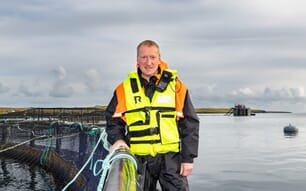In 2011, Russia imported $2.6bn worth of fish and seafood, a 19 per cent increase relative to 2010. Market analysts report that variety and quality of seafood are increasingly important to Russian consumers. Supermarkets are now stocking a wider variety of seafood than ever, expanding their selections beyond traditional Russian fishes such as herring, mackerel and salmon. Consumers can now purchase squid, prawns, live scallops, snails, oysters and more.
Market experts say that the annual increase in the consumption of frozen and fresh fish, shelled shrimps (peeled) and shrimps in the shell, whole calamari, calamari fillet, calamari rings, mussels and mixed seafood is estimated to be 20 to 30 per cent in the coming year. The annual consumption of more up-market products such as black tiger prawns, royal freshwater shrimps, lobsters, crayfish, scallops, octopus and crab is growing at a rate 40 to 50 per cent annually.
Due to Russias accession to the WTO, nearly all categories of fish and seafood will see a reduction in tariffs, although reductions may not occur immediately with accession.
Medium-term Market Access Gains due to WTO accession:
Frozen, fresh and chilled fish (excluding filets) will see reduced tariffs between 2013 and 2017. The pre-accession applied bound rate is currently 10 per cent; the final bound rate is expected to fall between eight and three per cent depending on species. For salmon and trout fillets, the final bound rate is expected to be four per cent by 2016, and for cod fillets, to five per cent by 2015.
Tariffs on frozen hake and pollock fillets will fall to seven per cent by 2014. For crustaceans, the tariff on whole lobsters will fall from 10 to only five per cent with this change occurring by 2015 for frozen and by 2016 for live lobsters. For non-whole frozen lobsters the tariff will fall from 10 to eight per cent by 2013.
For frozen shrimps and prawns, the current tariff will fall to between five and three per cent by 2014-2015 depending on variety. For frozen crabs, it will fall from 10 to five per cent by 2015-2016 depending on variety. For mollusks, the pre-accession applied/post-accession bound rate will fall to seven per cent by 2015 for oysters, for scallops to six per cent by 2015 and for mussels to five or six per cent by 2016-2017 depending on variety.
Further ReadingYou can view the full report by clicking here. |




